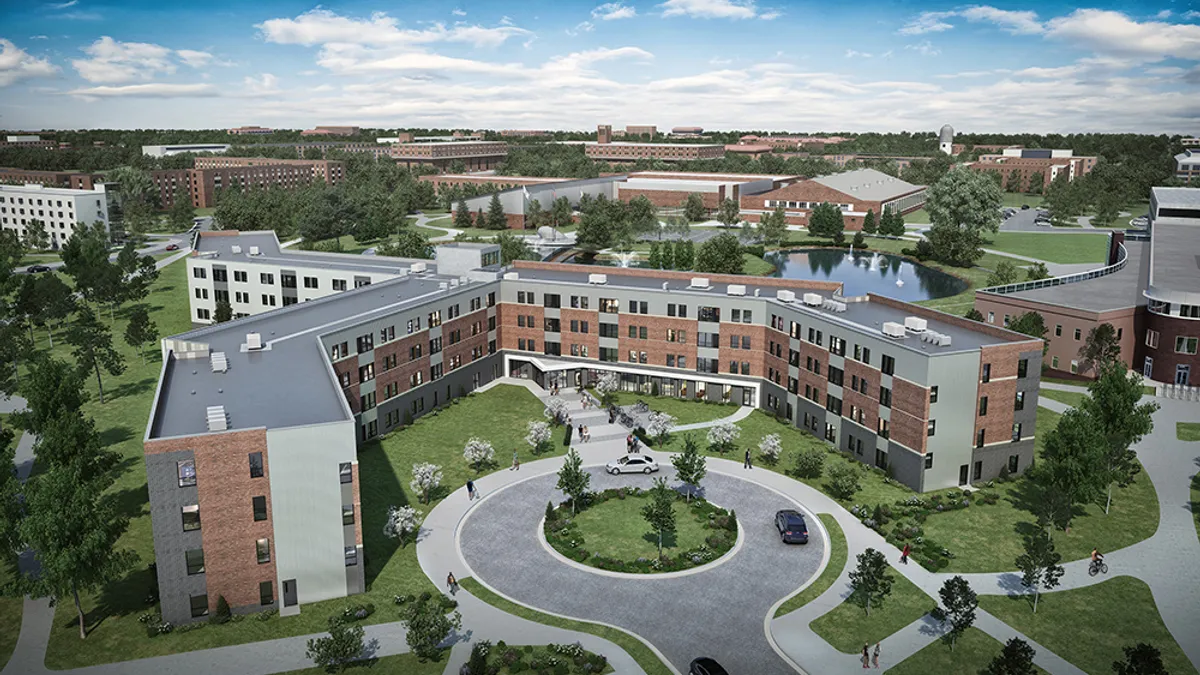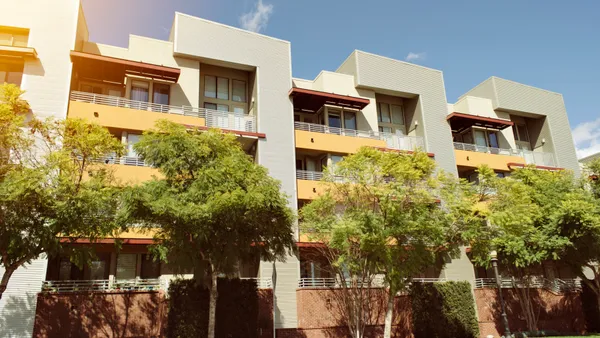Dive Brief:
- Although owners of privatized student housing projects have seen occupancy rebound since the end of COVID-19 challenges, they will continue to face headwinds in the form of reduced demand and higher costs due to inflation, which could leave them susceptible to a light decline in credit quality, according to a recent report from credit rating agency Moody’s Investor Service.
- During the pandemic, many projects were able to overcome problems due to “extraordinary university support” in the form of discretionary occupancy or financial support, including help covering rental refunds and refunding projects' bonds, according to Moody’s. More than a third of projects rated by the firm used project funds, separate from their debt service reserve fund, for unintended uses or they received university support.
- Most projects tracked by Moody’s experienced problems during the pandemic, but it wasn’t universal. Roughly 25% of the projects on its radar were able to meet or exceed a 1.20x debt service coverage during the height of COVID-19 without needing to rely on reserve draws or one-time assistance provided by universities not required in the legal structure.
Dive Insight:
As students went back to in-person learning, median occupancy jumped from 71% in fall 2020 to 98% in fall 2022 in the projects tracked by Moody’s and rental rates have increased. In 2022, 61% of projects rated by the ratings agency increased their rates by 3% or more.
As rental rates have risen, student owners and developers have been able to replenish their reserves. In addition, most projects that utilized university support have provided repayment.
In some college markets, leasing has been incredibly strong, according to student housing operators. For instance, Knoxville, Tennessee, home to the University of Tennessee, has seen “significant rental rate growth and incredible leasing velocity,” according to Jonathan Bove, an executive vice president at Athens, Georgia-based student housing developer, owner and operator Landmark Properties.
“There is a huge incoming freshman class, continued enrollment growth and a ton of demand in the market,” Bove said.
Ongoing challenges
Although the outlook is much more stable for student housing projects than it was three years ago, there are still challenges for developers. Inflation in wages, insurance premiums, utility charges and capital expenses are forcing an increase in rental rates, according to Moody’s.
New supply could also be a challenge around some universities, such as the University of Texas in Austin. “There are certainly some markets that are pretty saturated, but that happens every year,” Bove said. “It's just a matter of which market it is in a given year.”
Other student projects could be challenged by weak demand due to university enrollment struggles, location or market dynamics.
“Though the financial positions of most projects have largely recovered from pandemic difficulties, a subset of projects with fundamental longer-term issues continue to face challenges,” Moody’s said in the report.
But Bove said the student sector has been resilient with a generally strong supply-demand situation. “Overall, I think the industry is setting more conservative rate growth targets this year,” he said. “I do think that it's a little bit of getting back to pre-pandemic normal in terms of most markets’ leasing velocity and most markets’ rate growth expectations.”
Click here to sign up to receive multifamily and apartment news like this article in your inbox every weekday.











